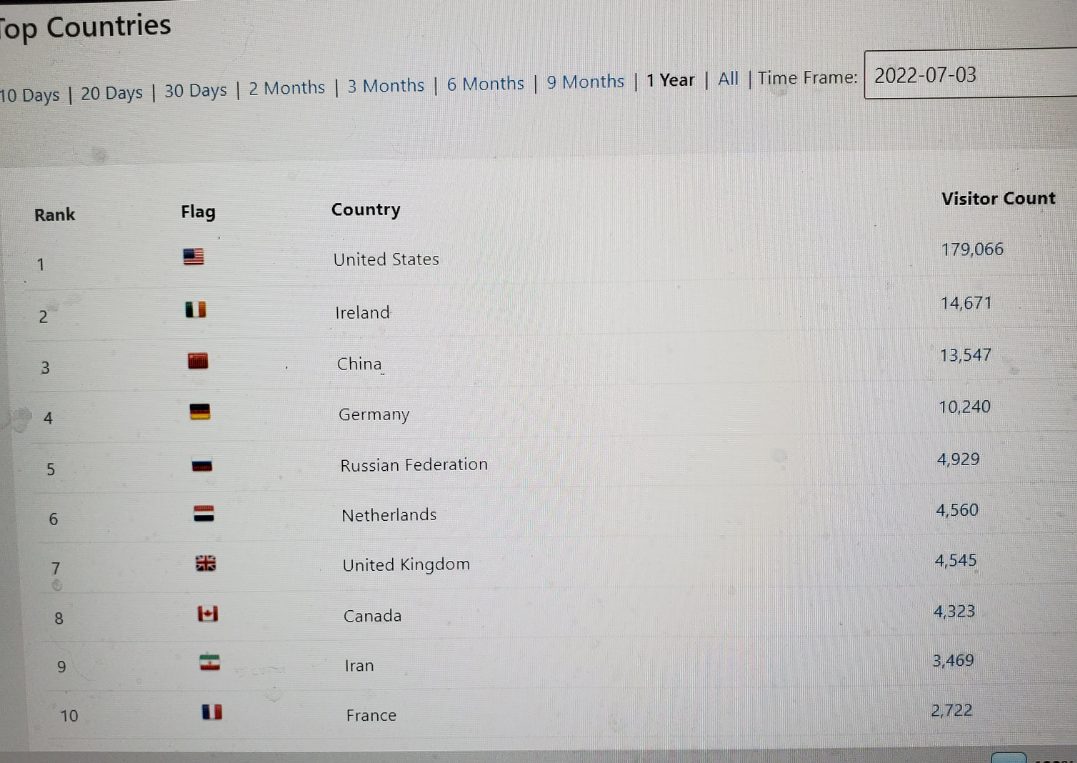Hits: 82
WPCNR YOUR LOCAL EPIDEMIOLOGIST By Dr. Katelyn Jetelina. November 7, 2022. Reprinted with permission.

Public health touches on all aspects of our lives, not just during a pandemic. Thanks to your feedback, this newsletter will continue with COVID updates but will start touching on other epidemiological topics, too.
Last week 5 new studies provided a first look into Dobbs v. Jackson’s impact on access to abortion care. This was largely thanks to JAMA Network that published a special issue on this topic. This is the story that data is telling.
Shift in location of abortions
Just like with COVID-19, data fragmentation touches nearly every other public health problem, including abortion. The Society of Family Planning anticipated this problem and started counting clinical abortions (i.e. at a physical location) beginning in 2022. They coin this effort #WeCount.
They just released their first report:
- Two months post-Dobbs, 10,600 fewer people had clinical abortions—a 6% decrease on a national level.
- Among states that banned or severely restricted abortion, there was a 95% decrease.
- States with the largest percent increases in abortions included North Carolina (37%), Kansas (36%), Colorado (33%), and Illinois (28%). California experienced virtually no change (1%), although still had the most abortions.
- This was an interesting pattern. Some states with restrictions in place (like North Carolina) experienced a surge because they were just closer in distance to states that banned abortion altogether, such as Indiana and Georgia. States on the East and West coasts, though, experienced little to no change.
A JAMA Network publication looked solely at Texas (remember Texas passed a highly restrictive before Dobbs in September 2021 called SB8). Specifically, scientists counted all abortions in the state of Texas from September 1, 2020 to February 28, 2022 and evaluated whether abortions increased, decreased, or stayed the same after SB8:
- Over the entire time period, there were 68,820 Texas facility–based abortions and 11,287 out-of-state abortions among Texas residents.
- After SB8, documented abortions among Texas residents decreased 33%.
- After SB8, out-of-state abortions among Texas residents increased from 17% to 31%. In other words, out-of-state abortions did not fully offset the overall decrease in facility abortions post-SB8.
Requests for medication abortion increase
Clinical abortion is not the only option for women. There is a very safe and effective alternative that people can access online and take at home—medication abortion. Another JAMA Network study looked at requests for medication before Dobbs, after Dobbs leaked, and after the Dobbs formal announcement. They found:
- More than 42,000 requests for abortion medications across 30 states.
- Requests in every state, regardless of policy, increased after the leak and the formal announcement.
- States with total bans had the highest increase in requests. Louisiana had the most medication requests followed by Mississippi, Arkansas, Alabama, and Oklahoma.
Travel time increases
Clinics closed, which increased travel times for people seeking in-person abortion care. A study in JAMA Network assessed exactly how much:
- Travel times to abortion facilities, on average, increased by three times.
- The largest increases were across the South (see figure below). In Texas, for example, the new travel time to the nearest abortion facility increased by almost a full workday.
- American Indian or Alaska Native, Black, and Hispanic populations experienced large absolute increases in travel time to abortion facilities.
Travel Time to Nearest US Abortion Facility Before and After Dobbs v Jackson Women’s Health US Supreme Court Decision. FromRader et al., JAMA Network. Source here.
Pregnancies among young girls are risky
A news story post-Dobbs went viral after an Indiana doctor provided abortion services to a 10-year-old Ohio rape victim. A recent study published the risks of pregnancy to the youngest of girls. The scientists looked at the negative impact (morbidity, mortality, and delivery outcomes) of over 90,000 pregnancy hospitalizations among the youngest of girls (under age 13 years) compared to older females. They found that compared to other pregnancies, pregnancies among 10-13 year olds led to:
- More preterm births
- More C-sections
- More preeclampsia cases
- More ICU admissions
- No difference in stillbirths
It’s clear the youngest girls who give birth face significant medical risks.
Bottom line
Early data shows Dobbs significantly changed the way in which people access abortion care in the U.S.: where to go, how to get it, what barriers they’ll face, and who can get it (health inequities). In just four short months post-Dobbs, thousands of women’s lives were impacted. This is just the beginning of the story, but we have the power to decide how medical care for women, and this map, look going forward. Go vote.
Abortion Laws by State (Source: Center for Reproductive Rights)
